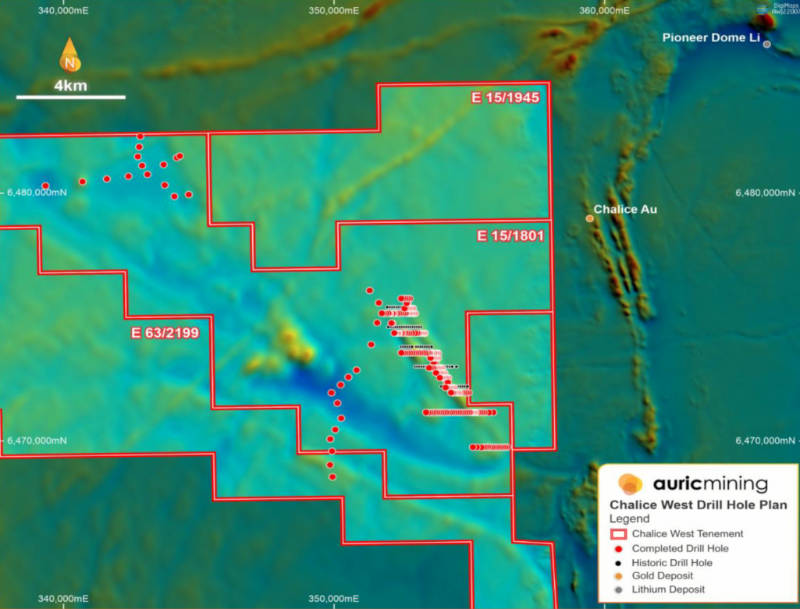Auric drilling reveals widespread clay-hosted REEs at Chalice West

Drilling has uncovered tasty, widespread REE mineralisation. Pic via Getty Images.
Further drill assays have confirmed that shallow, clay-hosted rare earths are widespread at Auric’s Chalice West project near Higginsville-Widgiemooltha, Western Australia.
The assays from 15 new holes, which take the total number of holes for which assays have been received up to 25, confirmed REE enrichment along a 7km northwest trending magnetic feature.
Notably, the results also indicated that valuable magnet rare earth oxides (MREO) – used to manufacture permanent magnets for electric car motors and wind turbines – make up to 31% of the total rare earth oxide (TREO) grades.
Significant results from the latest batch of assays from Auric Mining’s (ASX:AWJ) drilling are:
- 6m grading 1,583 parts per million (ppm) TREO (30.6% MREO) from a down-hole depth of 56m including 1m at 3,323ppm TREO in hole AAC0354;
- 14m at 712ppm TREO (25.1% MREO) from 32m in hole AAC0416; and
- 12m at 587ppm TREO (25% MREO) from 52m including 1m at 2,459ppm TREO in hole AAC0417.
These add to previous assays such as 4m at 3,951ppm TREO (21.9% MREO) from 41m in AAC0239 that the company unveiled in December last year.
Outstanding results
Managing director Mark English said the results were outstanding and have led to the identification of three zones, the largest of which corresponds with a 7km long magnetic feature in the project’s southeast.
“These results present a fantastic opportunity for Auric. There is a lot more work to be done, particularly to close the spacings in the 7 km system, drill the prominent magnetic feature at the centre of the project, expand the drilling in the NW and southern parts of the project,” he added.
“This drilling program represents a very small proportion of the 408 km2 project area.”

Multi-element drill program
Auric had completed in late November, a 227 hole aircore drill program aimed at searching for gold, nickel, lithium and rare earths within the project, which is just a few kilometres from the Chalice gold mine that produced nearly 700,000oz of gold less than a decade ago.
This drilling has substantially expanded the area of elevated REE hosted in clays to include a series of wide-spaced reconnaissance holes in the northwest of E15/1801 as well as a second reconnaissance traverse in the centre of the tenement, extending south into E63/2199.
Most assays have also returned a MREO proportion of more than 20% of the TREO grade, indicating that Chalice West is enriched in highly sought-after REE metals such as neodymium, praseodymium, terbium and dysprosium that are used for permanent magnets.
While more work is required to determine the exact kind of clay-hosted mineralisation present at Chalice West, they are much sought after due to the ease of mining and processing.
Next steps
The company now plans to carry out petrography work to characterise the deportment of REEs in the clay horizon.
It will also reprocess or fly aeromagnetic and radiometric surveys over the magnetic features to obtain detailed outlines of the anomalies identified in the Geological Survey of Western Australia dataset.
Auric will then move to drill postponed holes over the prominent magnetic high within the centre of the currently defined REE anomalies along with planning for further drilling to test the REE clays and expand the prospects.
This article was developed in collaboration with Auric Mining, a Stockhead advertiser at the time of publishing.
This article does not constitute financial product advice. You should consider obtaining independent advice before making any financial decisions.
Related Topics

UNLOCK INSIGHTS
Discover the untold stories of emerging ASX stocks.
Daily news and expert analysis, it's free to subscribe.
By proceeding, you confirm you understand that we handle personal information in accordance with our Privacy Policy.








